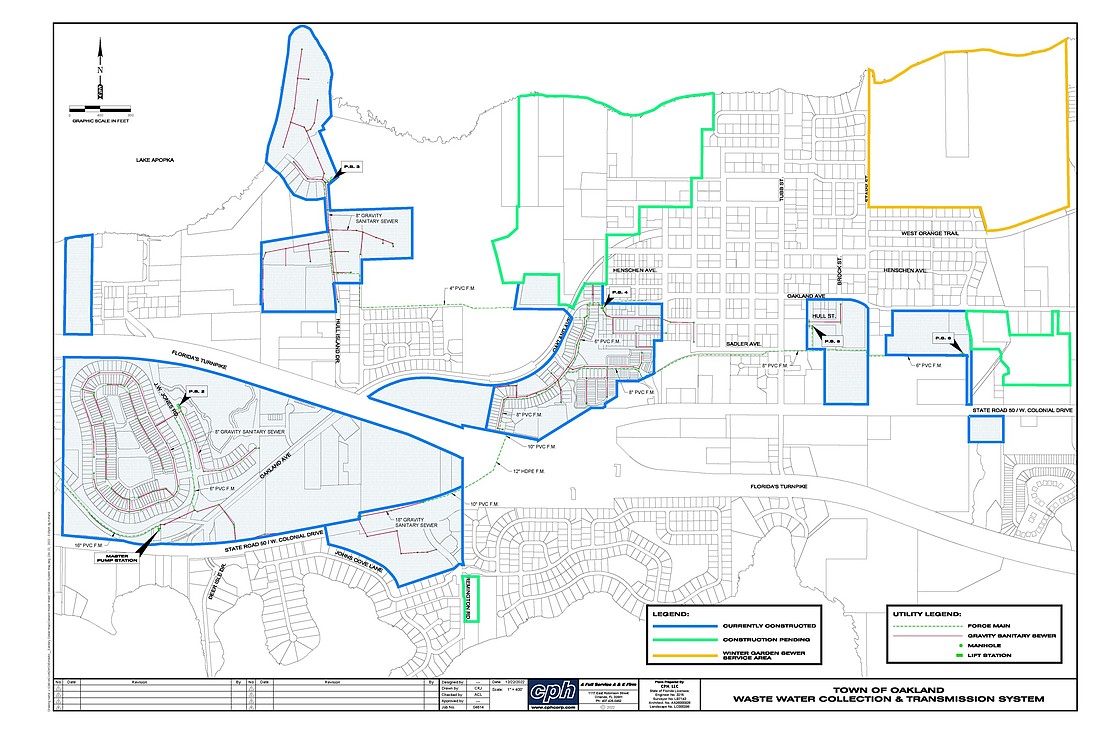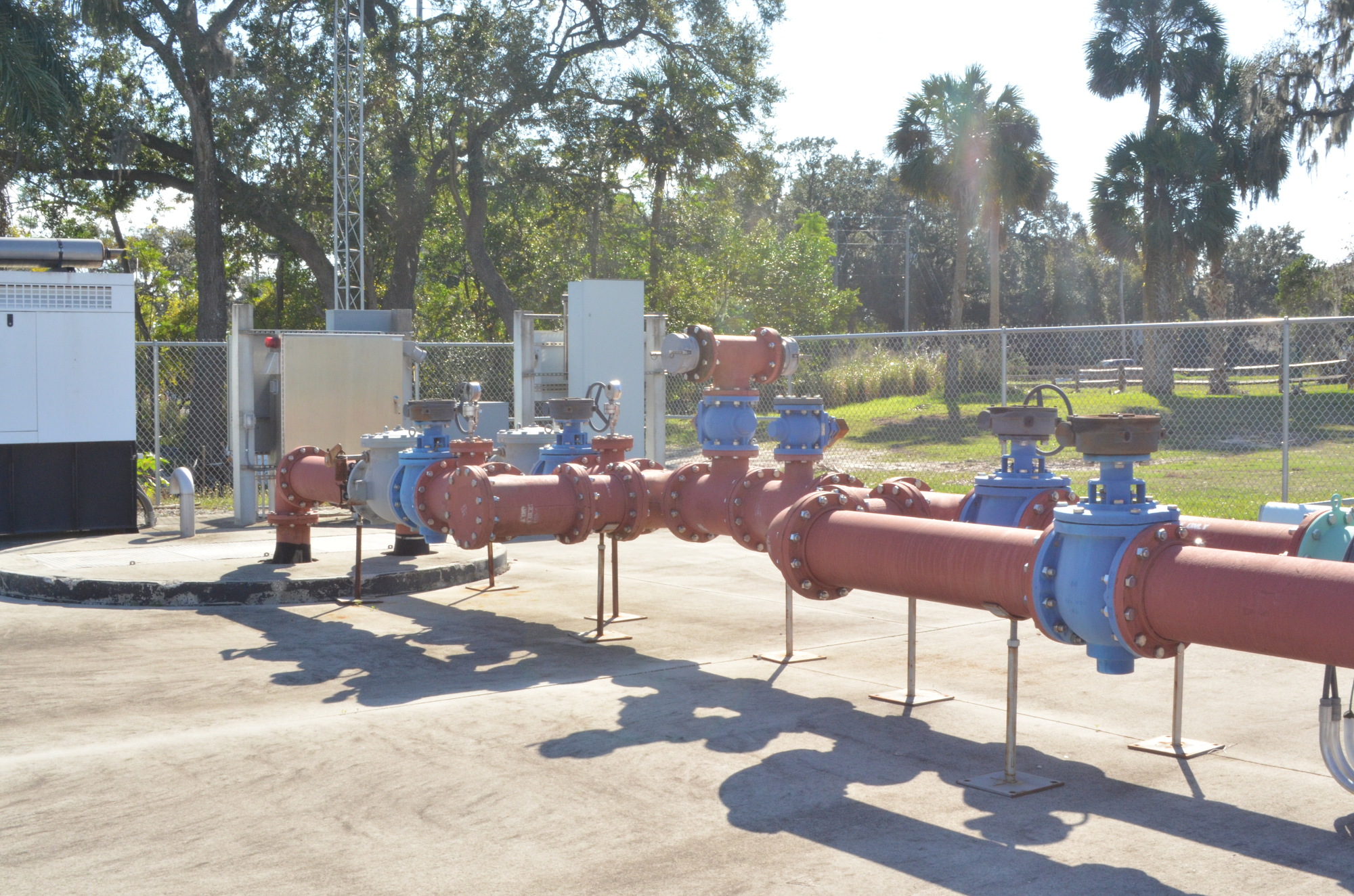- July 26, 2024
-
-
Loading

Loading

A massive ongoing project started by the town of Oakland a decade ago is proving to be a benefit to the town as more businesses choose to set up shop in Oakland. This year will mark even more change as officials continue the town’s multi-million-dollar conversion from septic to sewer.
New residential construction is being built with sewer hookups, as are large-scale commercial projects such as Lakeside Church and Tractor Supply Co. Much of it is being paid for with a combination of state legislature funds, impact fees and developer contributions.
The town’s goal has been to create a 21st-century community with 19th-century charm.
“Our goal when we started this was to get from the Lake County to the Winter Garden city limits,” said Public Works Director Mike Parker. “Lift Station 6 gets us there. The infill will be development driven. As development comes in, we will build more.”
PUTTING A PLAN INTO ACTION
Oakland officials began discussions in 2013 with a series of visioning meetings to gauge residents’ desires. The general consensus was they wanted Mayberry — with restaurants and shopping opportunities. But to get there, the town would have to stop relying on its old septic system and create and implement an aggressive — and expensive — plan to convert to a sewer system that could handle the wastewater volume that restaurants and even hotels produce.

Constructing a treatment plant was out of the question because of costs and other factors, so the town entered an agreement with the city of Clermont to process the wastewater.
The next step was to build the necessary infrastructure to move the wastewater through the town and into Clermont, so the town began a series of lift station projects.
NEED A LIFT?
Lift Station 1 was constructed at the west end of the town near the Lake-Orange County Line to direct the wastewater to the treatment plant in Clermont.
Lift Station 2, which houses the master pump station, is located on J.W. Jones Road and services a large area between the Lake-Orange County Line and Remington Road south of Florida’s Turnpike and mainly north of West Colonial Drive.
Lift Station 3 serves two residential subdivisions along Hull Island Drive.
Lift Station 4 services the area that includes the Longleaf at Oakland residential neighborhood and The Avenue on Oakland apartment complex.

Lift Station 5 is now in service at the intersection of East Hull Avenue and South Arrington Street. It serves Tractor Supply Co. and Lakeside Church, both on Colonial, and some residences.
“We did a septic-to-sewer initiative in 2021-22,” Parker said. “We eliminated existing septic tanks and put those residences — about 50 houses — on central sewer. A couple of … churches we put on the sewer as well with that project.”
Lift Station 6 is under construction now along Catherine Ross Road (formerly Motamassek Road) and will service most of the development south of Colonial, Parker said. Several businesses on Colonial that cater to childcare and youth aquatics also have committed to building in that area.
This lift station will service a 44-home subdivision already permitted east of Catherine Ross and south of Oakland Avenue, as well as Oakland Avenue Charter School and the town’s public safety facility that houses the Oakland Police Department and Orange County Fire Rescue Department.
By the end of December 2022, the town had the concrete structures to build the lift station lined along the road and ready to be placed in the ground. Parker estimated the lift station will be operational by May.
Catherine Ross Road will be under construction in late 2023 and likely will open in 2024, he said. It will serve as another north-south connector to alleviate traffic on Oakland Avenue and Colonial.
Parker said the conversion project is out to bid with a deadline of this month. This project will convert the public safety building and the charter school from the septic system and connect it to Lift Station 6 once it goes into operation in late spring.
“Removing the school and public service building from the seven septic tanks and 1-acre-size drain field is a huge accomplishment for the town — because there’s a lot of operations and maintenance to managing something that size, plus the (effect on the) environment,” Parker said. “All that septic is going right into the ground, which is leaching right into Lake Apopka.”
A small parcel of land south of Colonial currently under construction also will connect to Lift Station 6.
The Lift Station 7 project currently is in the design phase. It will serve the northern extension of Jefferson Street near Lake Apopka and should be operational by mid-2024. This includes the new Briley Farms development as well as surrounding existing homes that will be removed from septic and hooked up to sewer, Parker said.
Parker said nothing is planned beyond the seventh lift station.
“It’s going to be dependent upon development and funding,” he said. “We’re accumulating these with as little funding from the town as we can. There’s a lot of things pending, but nothing concrete.”
“It is simply amazing when you consider that only six years ago, none of this infrastructure even existed,” Parker said. “Oakland is certainly growing!”
According to Parker, only newly constructed neighborhoods and commercial projects are being connected to sewer. He said it could be 10 years before established communities such as Johns Landing and Johns Cove are connected, but those residents eventually will get the opportunity.
“Five years ago, we didn’t have anybody on sewer, and now we have a little over 1,000 customers on sewer and (are) pumping 3 million gallons a month,” Parker said. “That’s a lot of sewer. It’s a whole new thing for Oakland.”
BENEFITS
Town of Oakland officials shared the benefits of shifting from a septic system to a sewer system:
• Reduces nutrient loading within Lake Apopka and Johns Lake basins.
• Protects the Gourd Neck Spring Watershed.
• Increases property values and helps balance the tax base.
• Allows higher sales tax revenues for local and state agencies.
• Enables the creation of jobs.
• Minimizes or eliminates the potential for additional septic systems in Oakland.
• Is supported by the local community.